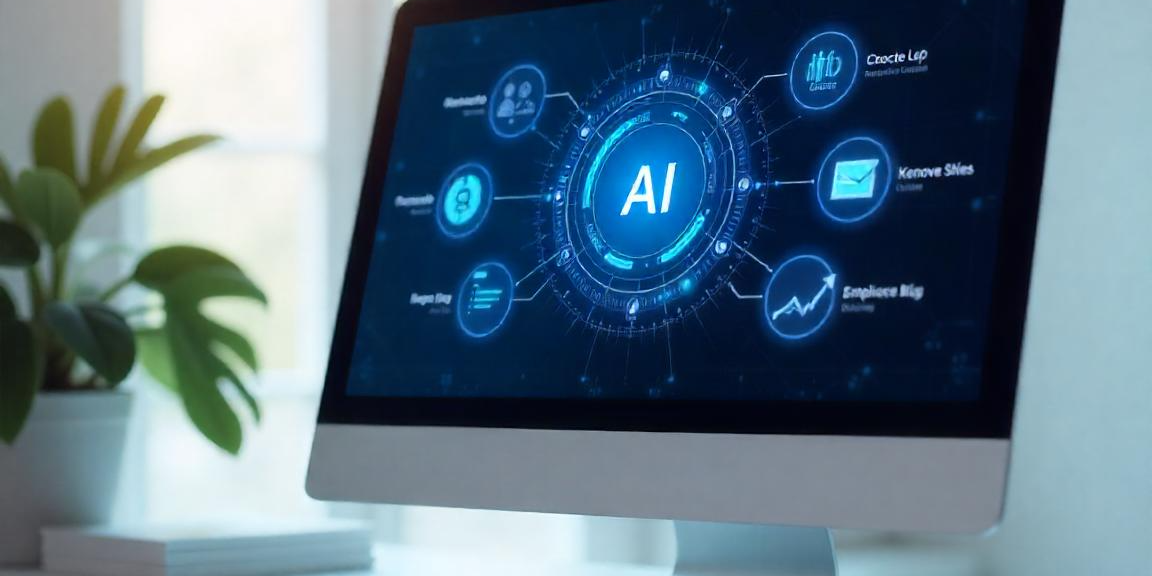In the fast-evolving digital landscape, artificial intelligence (AI) is revolutionizing website creation. From automating design processes to enhancing user experience (UX) and enabling smarter, data-driven development, AI tools are empowering creators—both seasoned professionals and novices—to build stunning, functional, and user-centric websites with unprecedented efficiency. Let’s dive into how AI is transforming these key areas.
1. Automating Design: Streamlining Creativity
AI-powered design tools are democratizing the creative process by automating time-consuming tasks and reducing the technical barriers to website design. Platforms like Wix ADI and Zyro use AI algorithms to generate fully functional website layouts based on user inputs, such as industry type, brand preferences, and desired features. These tools analyze thousands of design templates, color schemes, and typography combinations to produce visually appealing websites in minutes.
For designers, AI tools like Figma’s AI plugins, Canva Magic Design and Adobe Sensei assist with repetitive tasks such as resizing images, generating design variations, or suggesting layouts that align with modern design trends. By handling the grunt work, AI frees up designers to focus on high-level creative decisions, resulting in faster project turnaround and increased productivity.
Moreover, AI-driven design systems can adapt in real-time. For instance, Framer’s AI features allow developers to tweak designs dynamically based on user feedback or A/B testing data, ensuring the final product is both aesthetically pleasing and optimized for performance.
2. Smarter UX: AI That Understands Users
User experience has always been about empathy—but now, AI gives us data-driven empathy. With tools like Hotjar, Crazy Egg, or FullStory, AI can interpret heatmaps, user behavior, and conversion funnels to identify friction points and improvement areas.
Even more advanced are AI chatbots like ChatGPT, Intercom Fin, or Drift, which handle customer queries in real time, reduce bounce rates, and create a more interactive experience.
AI is also powering adaptive UX, where the layout and content of a website dynamically change based on user behavior or preferences. Think Netflix-style recommendations, but applied to product pages or service offerings.
3. Improving UX: Personalization and Intuition
User experience is at the heart of successful websites, and AI is taking UX to new heights by enabling hyper-personalized and intuitive interactions. AI tools analyze user behavior, preferences, and demographics to deliver tailored content and interfaces that resonate with individual visitors.
- Personalization Engines: Platforms like Dynamic Yield and Algolia use AI to recommend products, articles, or services based on a user’s browsing history or real-time interactions. For e-commerce sites, this means suggesting relevant products, while for content-driven sites, it ensures users find articles or videos aligned with their interests.
- Chatbots and Virtual Assistants: AI-powered chatbots, such as those built with Dialogflow or Drift, provide instant customer support, guide users through websites, and answer queries 24/7. These tools enhance UX by reducing friction and ensuring users get the information they need quickly.
- Accessibility Enhancements: AI is also making websites more inclusive. Tools like accessiBe and UserWay use machine learning to automatically adjust websites for accessibility compliance, such as adding alt text to images or enabling keyboard navigation for users with disabilities. This not only improves UX for diverse audiences but also ensures websites meet legal standards.
By leveraging predictive analytics and natural language processing (NLP), AI tools create seamless, engaging, and accessible experiences that keep users coming back.
4. Enabling Smarter Website Creation: Data-Driven Development
AI is not just about aesthetics and usability—it’s also making website creation smarter by integrating data-driven insights into the development process. Here’s how:
- Content Generation: Tools like Jasper AI and Copy.ai use NLP to generate high-quality website copy, from headlines to product descriptions, tailored to specific audiences. These tools analyze SEO trends and user intent to ensure content is both engaging and discoverable.
- Code generation tools like GitHub Copilot and Codeium can auto-suggest entire code blocks based on context.
- No-code platforms like Webflow, Framer, and Builder.ai are letting marketers and designers build complex, responsive sites without touching a line of code.
- SEO Optimization: AI-driven platforms like SurferSEO and Clearscope help creators optimize websites for search engines by analyzing top-performing content and suggesting keyword strategies. This ensures websites rank higher and attract more organic traffic.
- Performance Monitoring: AI tools like Google Analytics 4 with machine learning capabilities track user behavior and identify bottlenecks in real-time. For example, if a webpage has a high bounce rate, AI can pinpoint issues—like slow loading times or poor mobile responsiveness—and recommend fixes.
- Security and Maintenance: AI-powered platforms like Sucuri and Wordfence use machine learning to detect and prevent cyber threats, ensuring websites remain secure. Additionally, tools like UptimeRobot monitor site performance and alert developers to downtime or technical issues, minimizing disruptions.
AI brings together design, content, and code to help teams build beautiful, user-friendly websites that perform well, stay secure, and scale easily—while making collaboration smoother and workflows way more efficient.
5. The Future: Human-AI Collaboration
While AI can automate and optimize, the human touch remains irreplaceable. The future lies in co-creation, where designers, developers, and content creators use AI not as a crutch, but as a creative partner.
By embracing AI tools, web teams are not just working faster—they’re working smarter. They’re building websites that are more intuitive, more engaging, and more tailored to user needs than ever before.
Conclusion
AI is redefining the boundaries of what’s possible in web design and development. As these tools continue to evolve, the role of human creators will shift—from doers to orchestrators, from executors to visionaries. If you’re not already exploring AI-powered workflows, now’s the time to dive in.
Smarter websites start with smarter tools—and AI is leading the charge.
Let’s chat, we’d love to show you what’s possible.
Have A Project In Mind? We’d Love to Hear from You 🙂
Submit the contact form below and schedule a free consultation with our expert!







